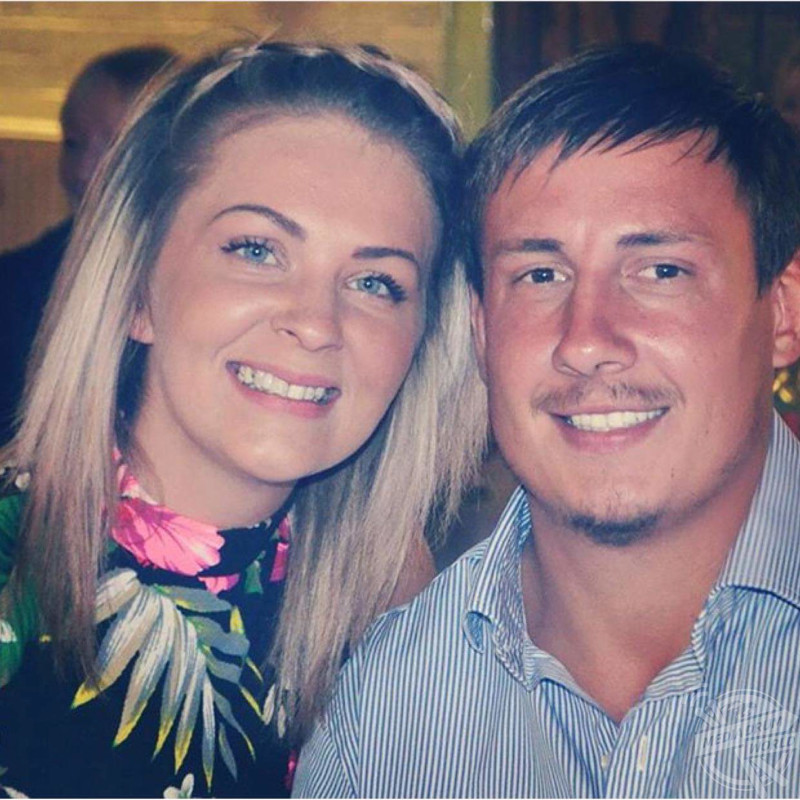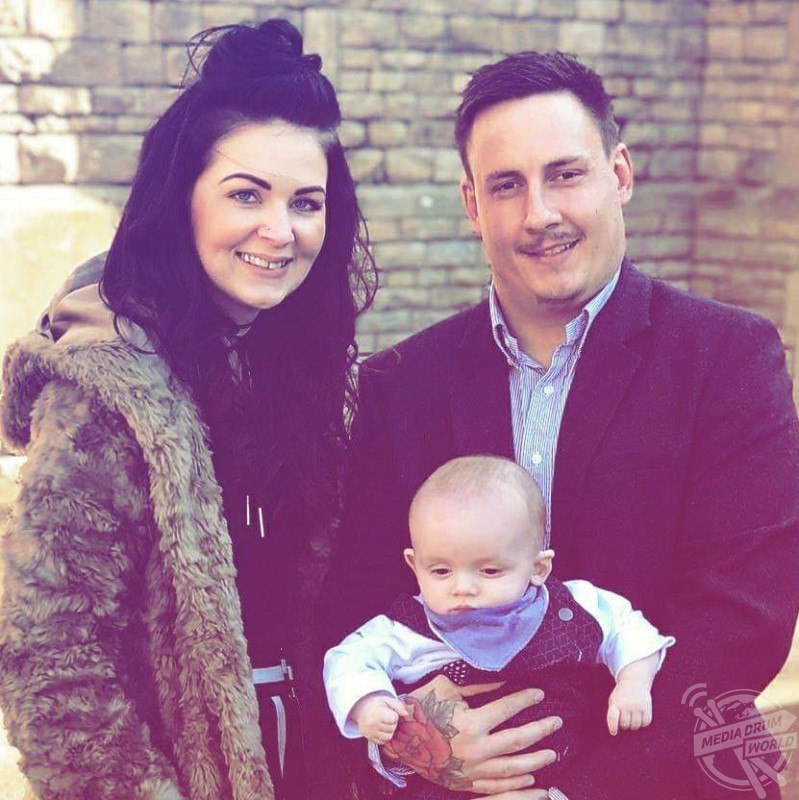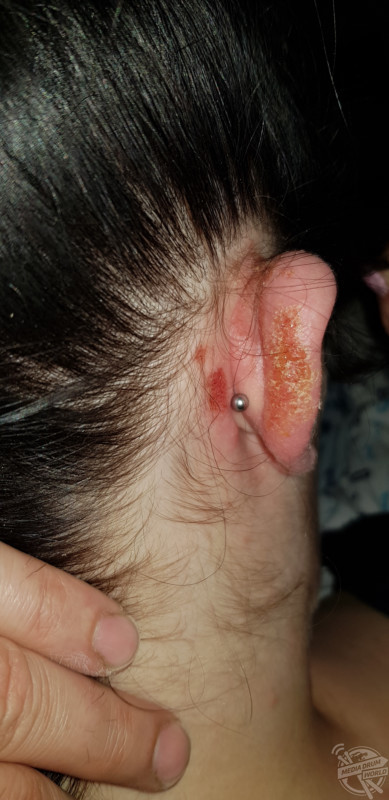By Rebecca Drew
THIS BRITISH mum-of-one was left scarred after dying her hair at a salon and suffering a severe allergic reaction which left her with swollen eyes and burns COVERING HER FACE – but it took doctors SIX-MONTHS to find out why.
Administration assistant, Georgina Carter (26) from March, Cambridgeshire, United Kingdom, had always enjoyed getting her hair dyed or eyebrows tinted ever since she was at school. She loved changing up her hair colour and had been black, brunette, blonde, pink, purple and red over the years and never experienced a reaction to dye.

MDWfeatures / Georgina Carter
But things changed for Georgina, who is mum to 17-month-old Blake, in March this year when she went to get her hair dyed and eyebrows tinted at a salon. Trained as a beauty therapist, she knew the importance of having patch test done beforehand and didn’t suffer any reaction so thought she would be safe to go ahead with her new look.
A week after her treatments, Georgina noticed a small chemical burn appear on her ear, thinking it was eczema or psoriasis at first, she didn’t stress too much but within another week the burn had spread across her face and body, her eyes had swollen, and her skin dried out and cracked. This left her with painful itchy skin which forced her to sleep with ice packs to soothe her skin at night.
During this time, Georgina had no idea she was having an allergic reaction to a chemical found in most hair dyes called paraphenylenediamine (PPD) and it took six months of several trips to A&E, three different doctors, a private dermatologist, 19 different tests that included blood tests and tests to rule out lupus and an allergy patch test over six days to find out the cause of her reaction.

MDWfeatures / Georgina Carter
Now Georgina will no longer be able to have her full head dyed but will be able to have highlights that use bleach instead of PPD, although she is devastated about this she is sharing her story to stress the importance of dye safety.
“I’ve always dyed my hair, I trained as a hairdresser and beauty therapist through college and loved changing my hair. I’ve been black, blonde, brown, pink, purple and red, pretty much any colour you can think of,” said Georgina.

MDWfeatures / Georgina Carter
“One week after I dyed my hair, I had a chemical burn appear on my ear and within a week this had turned into a burn on my face and within days it had spread to a full body rash.
“My eyes had also swollen, my skin had cracked and dried and my whole body was itchy to the point where I was sleeping with ice packs on my body.

MDWfeatures / Georgina Carter
“I had no idea it was an allergic reaction, even A&E, three different doctors and a private dermatologist didn’t know what it was.
“I tried a range of prescription steroid creams and different moisturisers that had been prescribed and some that I bought from the shop.

MDWfeatures / Georgina Carter
“I’m not sure why I reacted, maybe it was because my hormones after having my baby had changed but we are still unsure.

MDWfeatures / Georgina Carter
“It took six months to finally get a diagnosis, I had 19 different tests done, standard blood tests and tests for lupus and an allergy patch test over six days.”
Many permanent and some semi-permanent hair dyes contain chemical PPD, which is known as an irritant and allergen. Dyes containing PPD are usually perfectly safe to use.

MDWfeatures / Georgina Carter
Georgina has been left with scars from the reaction on her face and chest area which means she is now more cautious about what she wears when she is out and about.
Finally, she described her upset about not being able to dye her hair in the same way again but shared a message to others about the importance of patch tests before getting dyed.

MDWfeatures / Georgina Carter
“I’m upset that I can’t dye my hair again but I am able to have highlights using bleach as this contains no PPD but I still panic each time just in case,” she said.
“I’m devastated that I don’t have the freedom anymore to do what I want with my hair.

MDWfeatures / Georgina Carter
“I am more cautious of what I wear, although I try not to let it bother me, people who I’m around daily like my friends, family and workmates, all know what I’ve been through so don’t draw attention to it anymore, but it was a big shock for everyone when the reaction came out.

MDWfeatures / Georgina Carter
“Make sure as a hairdresser or beautician, you are not completing a treatment without a patch test and as a client, never risk having a treatment without one by thinking, ‘it won’t happen to me’.

MDWfeatures / Georgina Carter
“To anyone in a similar situation, don’t panic, eventually doctors and dermatologists will find an answer. It’s a long journey but it will get better.”

MDWfeatures / Georgina Carter







